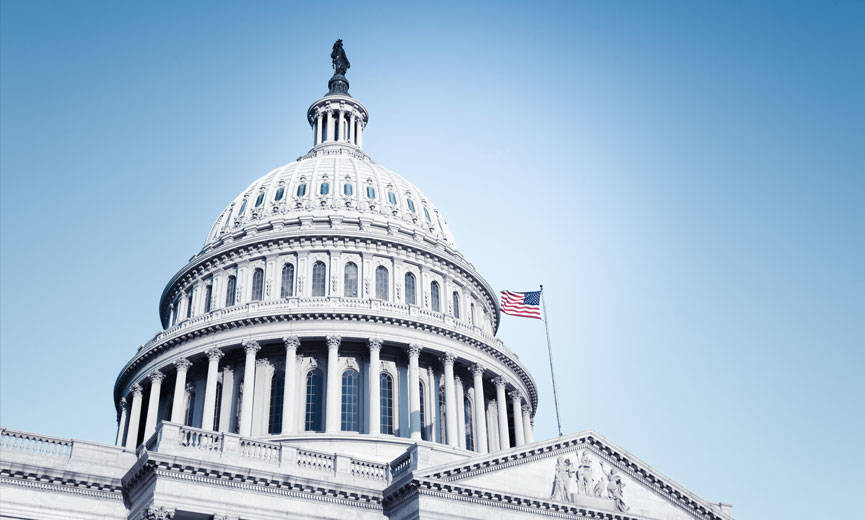The Families First Coronavirus Response Act (FFCRA or Act) requires certain employers to provide employees with paid sick leave or expanded family and medical leave for specified reasons related to COVID-19. The Department of Labor’s (Department) Wage and Hour Division (WHD) administers and enforces the new law’s paid leave requirements. These provisions will apply from April 1, 2020 through December 31, 2020.
Generally, the Act provides that covered employers must provide to all employees:[2]
- Two weeks (up to 80 hours) of paid sick leave at the employee’s regular rate of pay where the employee is unable to work because the employee is quarantined (pursuant to Federal, State, or local government order or advice of a health care provider), and/or experiencing COVID-19 symptoms and seeking a medical diagnosis; or
- Two weeks (up to 80 hours) of paid sick leave at two-thirds the employee’s regular rate of pay because the employee is unable to work because of a bona fide need to care for an individual subject to quarantine (pursuant to Federal, State, or local government order or advice of a health care provider), or care for a child (under 18 years of age) whose school or child care provider is closed or unavailable for reasons related to COVID-19, and/or the employee is experiencing a substantially similar condition as specified by the Secretary of Health and Human Services, in consultation with the Secretaries of the Treasury and Labor.
A covered employer must provide to employees that it has employed for at least 30 days:[3]
- Up to an additional 10 weeks of paid expanded family and medical leave at two-thirds the employee’s regular rate of pay where an employee is unable to work due to a bona fide need for leave to care for a child whose school or child care provider is closed or unavailable for reasons related to COVID-19.
Covered Employers: The paid sick leave and expanded family and medical leave provisions of the FFCRA apply to certain public employers, and private employers with fewer than 500 employees.[4] Most employees of the federal government are covered by Title II of the Family and Medical Leave Act, which was not amended by this Act, and are therefore not covered by the expanded family and medical leave provisions of the FFCRA. However, federal employees covered by Title II of the Family and Medical Leave Act are covered by the paid sick leave provision.
Small businesses with fewer than 50 employees may qualify for exemption from the requirement to provide leave due to school closings or child care unavailability if the leave requirements would jeopardize the viability of the business as a going concern.
Qualifying Reasons for Leave:
Under the FFCRA, an employee qualifies for paid sick time if the employee is unable to work (or unable to telework) due to a need for leave because the employee:
- is subject to a Federal, State, or local quarantine or isolation order related to COVID-19;
- has been advised by a health care provider to self-quarantine related to COVID-19;
- is experiencing COVID-19 symptoms and is seeking a medical diagnosis;
- is caring for an individual subject to an order described in (1) or self-quarantine as described in (2);
- is caring for a child whose school or place of care is closed (or child care provider is unavailable) for reasons related to COVID-19; or
- is experiencing any other substantially-similar condition specified by the Secretary of Health and Human Services, in consultation with the Secretaries of Labor and Treasury.
Under the FFCRA, an employee qualifies for expanded family leave if the employee is caring for a child whose school or place of care is closed (or child care provider is unavailable) for reasons related to COVID-19.
Duration of Leave:
For reasons (1)-(4) and (6): A full-time employee is eligible for up to 80 hours of leave, and a part-time employee is eligible for the number of hours of leave that the employee works on average over a two-week period.
For reason (5): A full-time employee is eligible for up to 12 weeks of leave at 40 hours a week, and a part-time employee is eligible for leave for the number of hours that the employee is normally scheduled to work over that period.
Calculation of Pay:[5]
For leave reasons (1), (2), or (3): employees taking leave shall be paid at either their regular rate or the applicable minimum wage, whichever is higher, up to $511 per day and $5,110 in the aggregate (over a 2-week period).
For leave reasons (4) or (6): employees taking leave shall be paid at 2/3 their regular rate or 2/3 the applicable minimum wage, whichever is higher, up to $200 per day and $2,000 in the aggregate (over a 2-week period).
For leave reason (5): employees taking leave shall be paid at 2/3 their regular rate or 2/3 the applicable minimum wage, whichever is higher, up to $200 per day and $12,000 in the aggregate (over a 12-week period—two weeks of paid sick leave followed by up to 10 weeks of paid expanded family and medical leave).[6]
Tax Credits: Covered employers qualify for dollar-for-dollar reimbursement through tax credits for all qualifying wages paid under the FFCRA. Qualifying wages are those paid to an employee who takes leave under the Act for a qualifying reason, up to the appropriate per diem and aggregate payment caps. Applicable tax credits also extend to amounts paid or incurred to maintain health insurance coverage. For more information, please see the Department of the Treasury’s website.
Employer Notice: Each covered employer must post in a conspicuous place on its premises a notice of FFCRA requirements.[7]
Prohibitions: Employers may not discharge, discipline, or otherwise discriminate against any employee who takes paid sick leave under the FFCRA and files a complaint or institutes a proceeding under or related to the FFCRA.
Penalties and Enforcement: Employers in violation of the first two weeks’ paid sick time or unlawful termination provisions of the FFCRA will be subject to the penalties and enforcement described in Sections 16 and 17 of the Fair Labor Standards Act. 29 U.S.C. 216; 217. Employers in violation of the provisions providing for up to an additional 10 weeks of paid leave to care for a child whose school or place of care is closed (or child care provider is unavailable) are subject to the enforcement provisions of the Family and Medical Leave Act. The Department will observe a temporary period of non-enforcement for the first 30 days after the Act takes effect, so long as the employer has acted reasonably and in good faith to comply with the Act. For purposes of this non-enforcement position, “good faith” exists when violations are remedied and the employee is made whole as soon as practicable by the employer, the violations were not willful, and the Department receives a written commitment from the employer to comply with the Act in the future.
[1] Wage and Hour Division does not administer this aspect of the law, but notes that every dollar of required paid leave (plus the cost of the employer’s health insurance premiums during leave) will be 100% covered by a dollar-for-dollar refundable tax credit available to the employer. For more information, please see the Department of the Treasury’s website.
[2] Employers of Health Care Providers or Emergency Responders may elect to exclude such employees from eligibility for the leave provided under the Act.
[3] Employers of Health Care Providers or Emergency Responders may elect to exclude such employees from eligibility for the leave provided under the Act.
[4] Certain provisions may not apply to certain employers with fewer than 50 employees. See Department FFCRA regulations (expected April 2020).
[5] Paid sick time provided under this Act does not carry over from one year to the next. Employees are not entitled to reimbursement for unused leave upon termination, resignation, retirement, or other separation from employment.
[6] An employee may elect to substitute any accrued vacation leave, personal leave, or medical or sick leave for the first two weeks of partial paid leave under this section.
[7] The Department has issued a model notice:
https://www.dol.gov/sites/dolgov/files/WHD/posters/FFCRA_Poster_WH1422_Non-Federal.pdf
The U.S. Department of Labor has resources to help workers and employers prepare for the COVID-19 virus. Visit their website for more information: https://www.dol.gov/coronavirus









